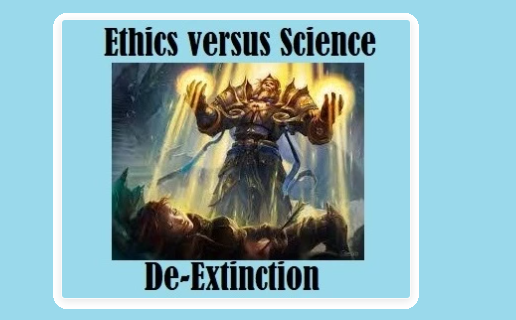Ethics vs. Science: The Quest to Save Species from Extinction
Written on
Chapter 1: Humanity's Fragile Existence
The events of 2020 highlighted the vulnerability of humanity, as the Covid-19 pandemic disrupted our lives and reshaped our understanding of safety. This raises a pressing concern: could this lead to our eventual extinction? While it's unlikely that the human race will face extinction in the immediate future, history tells us that 99.9% of all species that have ever existed are now extinct. This prompts a critical inquiry: it's not a matter of "if" humanity will face extinction, but rather "when."
Cultural evolution has allowed us to thrive by altering our environment rather than adapting to it. However, this very adaptability might become our greatest adversary. Our attempts to change the world around us have often resulted in detrimental consequences, creating new threats. We are responsible for climate change, pollution, nuclear armaments, and pandemics, and it is plausible that we will ultimately be accountable for our own demise.

Chapter 2: The Evolution of Science
Amid these challenges, a new scientific pursuit has surfaced—the de-extinction of species that have long been lost. This initiative aims to cultivate populations of healthy, genetically robust animals that can be reintroduced into their natural habitats, allowing them to breed and positively impact the ecosystem. If successful, we could witness the return of woolly mammoths in Siberia or living Tasmanian tigers. Advances in cloning and gene-editing technologies have made de-extinction seem increasingly feasible. However, ethical questions arise: is it moral to resurrect these species? Are we, in essence, playing God? Is science veering into the realm of necromancy?
This ethical debate raises significant theological and scientific concerns, as it involves wielding immense power over life. Misusing this power or interfering with natural processes could have catastrophic repercussions for our ecosystems. Literature and films have often warned us of the potential consequences of such actions—consider the cautionary tales in works like "Frankenstein," the "Jurassic World" series, and the "Terminator" franchise. A notable milestone in de-extinction occurred in 2003 when scientists in Europe successfully resurrected the Pyrenean ibex, a mountain goat that had gone extinct. Tragically, the newborn ibex died mere minutes after birth, making it not only the first species to be revived from extinction but also the first to become extinct twice.
What comes next in this journey?
In the United States, researchers are attempting to revive the passenger pigeon, while UK scientists are contemplating the resurrection of the great auk, dubbed the ‘Penguin of the North.’ Meanwhile, in South Africa, efforts are underway to bring back the quagga, a zebra-like creature with a unique, stripeless back. The most ambitious of these projects involves teams from South Korea, Japan, and the United States racing to reintroduce the iconic woolly mammoth. Even if these projects succeed, the revived animals will not be identical to their ancestors, as their DNA will be modified to incorporate desired traits, like giving an elephant a woolly coat.
The ultimate goal of de-extinction is to restore ecological balance and enhance biodiversity, which is crucial given that between 30 and 150 species vanish from our planet daily. Research indicates that current extinction rates are 1,000 times higher than in pre-human eras. Human activities are accelerating this mass extinction, and de-extinction may offer a pathway to mitigate some of that damage. However, challenges remain, as DNA deteriorates over time, limiting our ability to resurrect certain species, such as dinosaurs. A prime example is the northern white rhino, with only two females left, both too aged and frail to breed naturally. The aim of de-extinction would be to create a single individual in a lab and, after many years, reintroduce it into the wild. Until that occurs, the northern white rhino stands as ‘functionally extinct.’
Chapter 3: The Ethics of Resurrecting Extinct Animals
Many oppose de-extinction, viewing it as unnatural and expressing fears about genetic manipulation, accusing scientists of overstepping moral boundaries. The Sooam Biotech Research Foundation in Seoul has faced criticism for cloning dogs for the Korean National Police and offering cloned pet dogs for £65,000. While these cloned pets may resemble their predecessors, they will never truly replicate them—similar to how even identical twins develop distinct personalities and traits. While reproductive human cloning remains illegal and ethically contentious due to associated risks, I find merit in the concept of de-extinction. It presents an opportunity for the greater good and a means to mend an ecosystem we have willingly shattered. However, I firmly oppose the idea of human cloning, even for the purpose of organ or tissue generation.